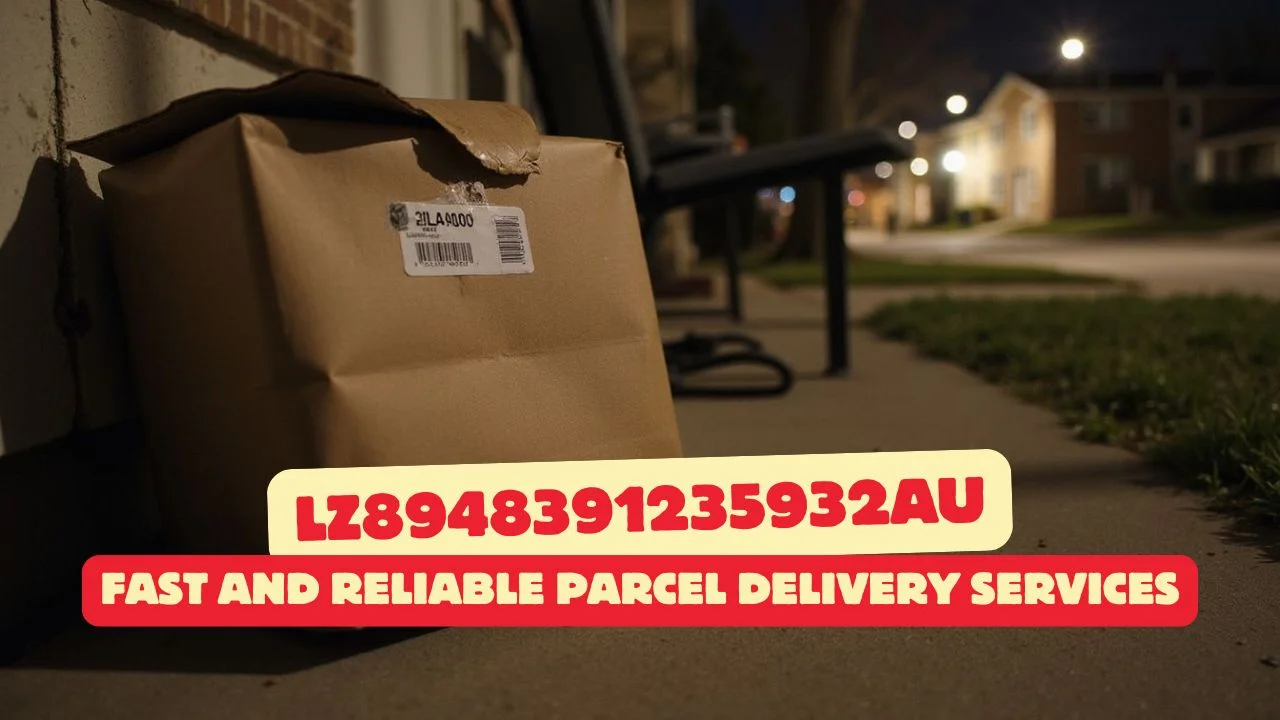Introduction
In today’s global e-commerce landscape, tracking numbers are essential for monitoring the journey of parcels across borders. One such tracking number, LZ8948391235932AU, has raised questions for many customers about its origin, status, and the delivery process. Tracking numbers are not just random strings; they hold specific information about the shipment, the courier handling it, and the country of origin. Understanding how to decode and monitor LZ8948391235932AU can save time, reduce confusion, and ensure timely delivery.
This guide will walk you through what the code means, the couriers that may handle it, how to track it, common shipping statuses, possible delays, and practical tips to manage your shipment effectively. Whether you are a first-time online shopper or a seasoned e-commerce seller, this comprehensive article will make parcel tracking simple, accurate, and stress-free. By the end, you’ll be able to confidently track and manage shipments associated with this number.
What LZ8948391235932AU Means
At first glance, LZ8948391235932AU might appear to be a random set of letters and numbers, but every segment carries significance:
- LZ: Typically represents the service type, such as a tracked international parcel.
- 8948391235932: A unique identifier ensuring no two packages share the same code.
- AU: Indicates the country of origin — Australia in this case.
This structured format allows international shipping systems to route packages efficiently and ensures transparency at every step of the delivery process. Knowing what each part of the code means helps avoid confusion when tracking shipments online.
Couriers Handling LZ8948391235932AU
Although the package originates in Australia, it may pass through multiple couriers depending on the destination:
- Australia Post: Responsible for initial dispatch and international forwarding.
- FedEx: Often handles international transport and final delivery.
- Local Postal Services (USPS, Royal Mail, Canada Post, etc.): Manage last-mile delivery in the destination country.
Being aware of which courier is responsible at each stage helps manage expectations and allows you to contact the right service if there are delays.
How to Track LZ8948391235932AU
Tracking your shipment is straightforward if you follow these steps:
- Start with Australia Post: Check the initial status of your package using the tracking number.
- Monitor via International Couriers: If the shipment has moved to FedEx or another courier, use their platforms for real-time updates.
- Use Multi-Courier Tracking Tools: Platforms that consolidate data from multiple couriers offer a comprehensive view of your parcel’s journey.
- Check Local Postal Services: Once the package reaches the destination country, local couriers usually take over the final delivery.
Always ensure you are using official platforms or reputable tracking systems to avoid misinformation.
Common Tracking Statuses
Understanding the meaning behind each tracking status helps you stay informed:
- Accepted / Lodged: Package has been registered by the courier.
- Processed Through Facility: Parcel sorted at a distribution center.
- In Transit: Package is en route to the destination.
- Arrived at Destination: Shipment has reached the receiving country.
- Pending Customs Clearance: Waiting for customs inspection.
- Out for Delivery: Local courier is delivering the package.
- Delivered: Shipment has successfully reached the recipient.
Recognizing these statuses prevents unnecessary worry during transit and helps you anticipate delivery timing.
Reasons for Tracking Delays
Tracking updates may sometimes be delayed due to various factors:
- Transit Gaps: Long distances between scanning points can cause periods without updates.
- Customs Processing: Packages may be held for inspection, delaying tracking updates.
- Peak Shipping Periods: Holidays or promotional sales can slow down processing.
- System Upload Delays: Not all scans appear in real time.
- Pre-Dispatch Label Creation: Tracking numbers may be generated before the courier receives the parcel.
Understanding these causes helps manage expectations and reduces frustration during shipping.
Tips for Efficient Tracking
To enhance your tracking experience:
- Enable Notifications: Sign up for SMS or email alerts for real-time updates.
- Verify Your Tracking Number: Make sure the number matches your shipping label.
- Monitor Customs Status: Be aware of any documents or duties required.
- Use Official Tracking Platforms: Avoid third-party websites with unreliable data.
- Contact Customer Support: If delays persist, contact the courier for assistance.
Following these best practices ensures smoother tracking and a better delivery experience.
Read More: How to Find Look What Momfound Give Away
Conclusion
Tracking numbers like LZ8948391235932AU are essential tools for modern e-commerce, providing visibility and control over shipments. Understanding its structure, the couriers involved, and how to monitor each stage ensures that customers are well-informed and able to manage delivery expectations. Tracking delays are common, but knowing why they happen and implementing best practices such as using official tracking platforms, enabling notifications, and monitoring customs requirements can minimize stress. By familiarizing yourself with common tracking statuses and knowing which courier is handling your shipment at each stage, you can proactively manage your parcel’s journey.
Whether you are receiving or sending goods internationally, this knowledge transforms a potentially confusing process into a straightforward, transparent, and reliable system. Mastering tracking not only saves time but also improves your overall online shopping experience, giving peace of mind in an increasingly global marketplace.
FAQs
- What does LZ8948391235932AU mean?
It is a unique tracking number for a parcel originating from Australia, with a structured code to facilitate international shipment tracking. - Which couriers handle this tracking number?
Australia Post handles initial dispatch, while FedEx and local postal services often take over for international and final delivery. - How can I track my shipment?
Use official courier websites or multi-courier tracking platforms to monitor your parcel at every stage. - Why are my tracking updates delayed?
Delays may result from customs processing, transit gaps, high shipping volumes, or system update lags. - Can I receive notifications for my shipment?
Yes, most couriers offer email or SMS alerts for real-time tracking updates.
